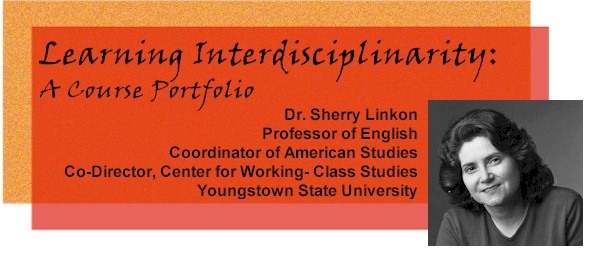|
My
research on students' learning in interdisciplinary courses began in 1999,
when I joined the Carnegie Scholar program. Since then, I've moved from
asking general questions about how students understand interdisciplinarity,
to identifying the obstacles students face in interdisciplinary courses,
to exploring and testing strategies for helping them understand interdisciplinary
theory and practice better.
My research has involved observation of courses, surveys of students,
interviews with faculty and students, and analysis of students' work.
As with most scholarship of teaching and learning projects, my work continues
to evolve, with each round of research generating new ideas for teaching
and new questions for research.
This
portfolio addresses several key questions about interdisciplinary teaching:
|
How
does interdisciplinary teaching and learning work?
One
of my first concerns in this project was learning about how students
and faculty view interdisciplinarity. I started by asking students
about how they understood the concept of interdisciplinarity,
but my interviews with faculty who were teaching interdisciplinary
courses revealed that they did not have a shared or well-defined
understanding of the concept.
|
|
What
do I want students to learn?
Once
I had a better understanding of the challenges involved in interdisciplinary
teaching and learning, I re-examined a course I had taught several
times, refining the course goals and incorporating what I had
learned so far into my vision of the course.
|
|
How
can I facilitate their learning?
One
of the problems I identified in my early research is that students
find the task of integrating multiple sources and ideas from multiple
fields very challenging. At the same time, students reported that
they appreciated incremental learning and clear rubrics. I incorporated
both of these strategies in designing this course.
|
|
How
would I know if it worked?
My
research focused on evaluating the effectiveness of my incremental
learning assignments. I gathered a variety of kinds of evidence
of students' learning, ranging from surveys and interviews to
students' projects and my own reflections.
|
|
How
did it go?
The
three-assignment incremental learning sequence worked well for
most students. My analysis of their work shows a clear development
of analytical complexity in their writing over the course of the
term. Students also noted that the sequence helped them gain confidence
and understanding.
|
|

